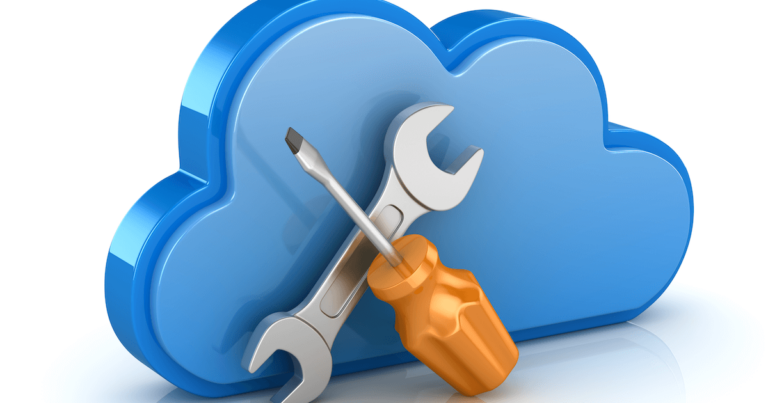Organizations across all verticals have invested heavily in developing applications to achieve greater agility and efficiency in day-to-day operations. Whether it is business functions like IT, operations, finance, human resource management, etc., or customer-facing systems, applications are significant.
Ensuring the 24×7 availability of these mission-critical applications and systems requires continuous monitoring. The team that monitors applications in a live environment needs real-time insights handy to look after whether applications are responding as desired and all supporting processes and services are running seamlessly. Any slow-performing request requires instant attention and pinpoint to recognize which part of the application architecture is responsible for system slow down or failure.
Now, as almost every business is either refactoring or has migrated their monolith application to cloud-based, microservices architectures, monitoring application performance becomes more challenging.
The distributed and dynamic system architecture of cloud-based applications increases in complexity and scale, for which traditional application and server performance monitoring tools offer little help.
In cloud environments, every hardware, software, and other cloud components such as container, open-source tool, and microservices generates records of every activity. With strict Mean Time To Detect and Mean Time To Recovery requirements, IT Operations, DevOps, and SRE teams look for better methodologies and tools to quickly identify system related problems like if it’s a bug/error in code or an application server issue, a slow-performing database query, or a network latency affecting the application to perform as required.
Thus, observability in these scenarios is all about analyzing and understanding all the activities happening around endpoints and services in the cloud environments and among the technologies.
But what does observability exactly mean? Why is it necessary, and what can it help organizations achieve?
Let’s find the answers to these questions in the later sections of the blog.
What Does Observability Mean?
Observability is instrumenting your system with the tools to collect actionable data to know when errors occur – but more importantly, why they happen. It is a way of understanding multilayer architecture by identifying what is broken and what needs improvement for better performance. It is considered as a technical solution that enables DevOps and SRE teams to actively debug their system. Observability tooling and techniques help explore system properties and patterns to understand their health and behavior not defined in advance.
Earlier, the technical teams were dependent on monitoring tools and techniques. Monitoring allowed technical teams to watch and understand the state of their systems. The method was used to gather predefined sets of metrics or logs related to their system but was not efficient enough to understand reasons of failure beforehand.
Since cloud-native environments have gotten more complex and the potential root causes for a failure or anomaly have become more difficult to pinpoint, teams using observability tooling quickly detect and resolve issues and ensure systems are efficient and reliable and customers are happy, all in real-time. SRE teams with observability data not only help IT but also benefit the business.
What is the difference between Monitoring and Observability ?
Development teams often find the line between observability and monitoring blurry. However, the truth is observability and monitoring complement each other while serving a different purpose in application development and management.
- Monitoring helps to check the overall health of the system. However, it has limitations to key business and system metrics derived from time series-based instrumentation, known failure modes, and black-box tests.
- Observability here offers more granular insights into the behavior of systems. The teams get insights with rich context enabling them to perform well-informed debugging and ensure reliability and resiliency.
How To Ensure The System Is Observable?
Navigating the right approaches allow IT teams to augment telemetry with user-experience data to eliminate blind spots. An observable system provides insights through all measurable components captured using three observability pillars: Event Logs, Metrics and Traces. Below, we have described these pillars to help you understand how teams ensure the system is observable with the data.
Event Logs: Logs are timestamped, immutable records of discrete events that can identify unexpected behavior in the system and provide information on how the system’s behavior has changed when things go wrong. It is highly recommended to consume logs in a structured manner, such as in JSON format so that log visualization systems can auto-index and make logs easily queryable.
Metrics: Metrics is the foundation of monitoring and aggregating over a period of time. There are a variety of sources such as infrastructure, hosts, services, cloud platforms, and external sources helping collect the metrics for the application. These in-depth insights help you keep an eye on resource usage, such as the amount of memory used by a method or how many requests a service handles per second.
Traces: Observability through traces provides insights into every individual transaction or request as it moves from one node to another in a distributed system. The in-depth details allow to trace and track the behavior of operations of all or particular requests and further assist to determine which components cause system errors, monitor flow through the modules, and find performance bottlenecks.
Why Is Observability Important?
Shifting to observability was a necessity that expanded from monitoring. With evolving cloud environments that are dynamic and distributed, DevOps and SRE teams felt the pressure to iterate faster, address customer expectations, and adopt automation had opened the doors for observability. Several challenges SREs are facing that are driving the adoption of observability:
- Systems and applications are more complex, resulting in the concept of “unknown unknowns.”
- Repeated deployment brings a high rate of risk of failures, requiring immediate detection to not to affect the user experience.
- The toolset is expanding and becoming more challenging to manage with manual or inefficient processes.
Transparency and tracking of the systems at this level help teams continuously and automatically understand new types of problems as they appear. The value of observability data also enables business teams with invaluable insight about digital services. Business teams use the insights to define and develop service level agreement (SLAs) for clients.
Benefits Of Observability
Observability benefits IT teams, organizations, and end-users altogether. Here are some of the advantages of observability in different business aspects:
1. Application Performance Monitoring
There could be several factors affecting the application’s performance. Observability allows you to keep a tab over end-to-end factors of the application and performance issues in cloud-native and microservices environments. Using highly advanced observability tools and solutions, it is also possible to automate more processes, increase efficiency and innovation alongside Ops and Apps teams.
2. DevSecOps and SRE
DevSecOps and SRE practices are all about building better, secure, and resilient applications. And to ensure this, these teams need real-time data and analytics about the developed applications. Adopting observability practices into a project from the beginning provides information about the foundational property of an application and its supporting infrastructure. It helps DevSecOps and SRE teams to leverage and interpret the observable data during the SDLC and ensure highly reliable business applications.
3. Infrastructure, Cloud, And Kubernetes Monitoring
Observability provides context-based data, which was not possible to acquire with monitoring. It helps infrastructure and operations teams to leverage enhanced context, improve application uptime and performance, cut down the time required to pinpoint and resolve issues, detect cloud latency issues, and optimize cloud resource utilization, and improve the administration of their Kubernetes environments and modern cloud architectures.
4. End-User Experience
Observability tools provide access directly to the information window of what the end-users are seeing and how is their experience on the application. These real-time insights allow teams to quickly agree on where to make improvements before it is requested from end-users. Delivering a good user experience helps companies maintain their reputation and increase constant revenue.
5. Business Analytics
Organizations can integrate business context with complete stack application analytics and overall performance to apprehend real-time business impact, enhance conversion optimization, make sure that software releases meet anticipated business goals, and confirm that the organization is adhering to internal and external SLAs.
Observability provides organization-wide improvements by opening the door to further innovation and digital transformation.
Conclusion
Observability provides better control and visibility into microservices based applications running within hybrid or multi-cloud environments. By covering three pillars: Logs, Metrics and Traces, observability practices ensure good health and performance of the system, help to proactively troubleshoot issues and ensure good user experience.




